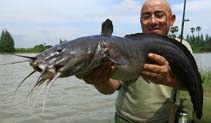http://www.fishbase.org/Summary/speciesSummary.php?genusname=Plotosus&speciesname=canius ---> http://192.134.151.83/Summary/speciesSummary.php?genusname=Plotosus&speciesname=canius
http://192.134.151.83/Summary/speciesSummary.php?genusname=Plotosus&speciesname=canius ---> https://fishbase.mnhn.fr/Summary/speciesSummary.php?genusname=Plotosus&speciesname=canius
https://fishbase.mnhn.fr/Summary/speciesSummary.php?genusname=Plotosus&speciesname=canius ---> https://fishbase.mnhn.fr/summary/Plotosus-canius.html
Plotosus canius, Gray eel-catfish : fisheries

You can
sponsor
this page
Common name (e.g. trout)
Genus + Species (e.g. Gadus morhua)
-

-
About this page
-
Languages
-
User feedbacks
-
Citation
-
Uploads
-
Related species
-


 Gray eel-catfish
Add your observation in
Fish Watcher
Upload your
photos
and
videos
Gray eel-catfish
Add your observation in
Fish Watcher
Upload your
photos
and
videos
Pictures
|
Google image
 Plotosus canius
Plotosus canius
Picture by
Jean-Francois Helias / Fishing Adventures Thailand
Teleostei (teleosts) >
Siluriformes
(Catfishes) >
Plotosidae
(Eeltail catfishes)
Etymology:
Plotosus:
Greek, plotos = swimming (Ref.
45335
)
.
More on author:
Hamilton
.
Environment: milieu / climate zone / depth range / distribution range
Ecology
Marine; freshwater; brackish; demersal; amphidromous (Ref.
51243
). Tropical; 27°N - 19°S, 72°E - 177°W
Indo-West Pacific: west and south coasts of India and off Sri Lanka eastward along the coasts of Bangladesh and Myanmar, through the Indo-Australian Archipelago and the Philippines as far as Papua New Guinea.
Size / Weight / Age
Maturity: L
m
?
range ? - ? cm
Max length : 111 cm TL male/unsexed; (Ref.
127983
); common length : 80.0 cm TL male/unsexed; (Ref.
3478
)
A plain dusky-brown species with a black dorsal fin tip. Shows banded pattern at night. Distinguished from adult
Plotosus lineatus
by its long barbels on the nostrils that can reach pass the eyes.
Adults found mostly in estuaries and lagoons, and sometimes up rivers in nearly fresh waters. They occur in the lower parts of rivers in freshwater or brackish water and in coastal seas (Ref.
12693
,
48635
). It is reported to have an extended breeding season and likely spawns in brackish water, based on optimal sperm survival at 0.9 % salinity; produces relatively few large eggs, consistent with parental care and it is possible that male fish construct nests and guard their fry (Ref.
127983
), Maximum length of 150 cm TL is without actual specimen (Ref.
3478
). Juveniles may occur in dense aggregations (Ref.
9801
). Feed on crustaceans, mollusks and fishes. Spines associated with anterior fins have potent venom. Marketed mostly fresh.
Life cycle and mating behavior
Maturity
|
Reproduction
|
Spawning
|
Eggs
|
Fecundity
|
Larvae
Gomon, J.R.
, 1984. Plotosidae. In W. Fischer and G. Bianchi (eds.) FAO species identification sheets for fishery purposes. Western Indian Ocean fishing area 51. Vol. 3. (Ref.
3478
)
IUCN Red List Status (Ref.
130435
)
Not Evaluated
CITES
Not Evaluated
Not Evaluated
Threat to humans
Venomous (Ref.
9801
)
Human uses
Fisheries: commercial
FAO - Publication:
search
|
FishSource
|
More information
Countries
FAO areas
Ecosystems
Occurrences
Introductions
Stocks
Ecology
Diet
Food items
Food consumption
Ration
Common names
Synonyms
Metabolism
Predators
Ecotoxicology
Reproduction
Maturity
Spawning
Spawning aggregation
Fecundity
Eggs
Egg development
Age/Size
Growth
Length-weight
Length-length
Length-frequencies
Morphometrics
Morphology
Larvae
Larval dynamics
Recruitment
Abundance
BRUVS
References
Aquaculture
Aquaculture profile
Strains
Genetics
Electrophoreses
Heritability
Diseases
Processing
Nutrients
Mass conversion
Collaborators
Pictures
Stamps, Coins Misc.
Sounds
Ciguatera
Speed
Swim. type
Gill area
Otoliths
Brains
Vision
Tools
E-book
|
Field guide
|
Length-frequency wizard
|
Life-history tool
|
Point map
|
Classification Tree
|
Catch-MSY
|
Special reports
Check for Aquarium maintenance
|
Check for Species Fact Sheets
|
Check for Aquaculture Fact Sheets
Download XML
Summary page
|
Point data
|
Common names
|
Photos
Internet sources
AFORO (otoliths) |
Aquatic Commons
|
BHL
|
Cloffa
|
BOLDSystems
|
Websites from users
|
Check FishWatcher
|
CISTI
|
Catalog of Fishes
:
genus
,
species
|
DiscoverLife
|
ECOTOX
| FAO - Publication:
search
|
Faunafri
| Fishipedia |
Fishtrace
| GenBank:
genome
,
nucleotide
|
GloBI
|
Google Books
|
Google Scholar
|
Google
|
IGFA World Record
|
MitoFish
|
Otolith Atlas of Taiwan Fishes
|
PubMed
| Reef Life Survey | Socotra Atlas |
Tree of Life
| Wikipedia:
Go
,
Search
| World Records Freshwater Fishing |
Zoobank
|
Zoological Record
Estimates based on models
Preferred temperature (Ref.
123201
): 25.1 - 29.1, mean 28.3 °C (based on 1244 cells).
Phylogenetic diversity index (Ref.
82804
): PD
50
= 0.5020 [Uniqueness, from 0.5 = low to 2.0 = high].
Bayesian length-weight: a=0.00490 (0.00248 - 0.00968), b=3.02 (2.84 - 3.20), in cm total length, based on LWR estimates for this species & (Sub)family-body (Ref.
93245
).
Trophic level (Ref.
69278
): 3.8 ±0.4 se; based on diet studies.
Generation time: 3.9 ( na - na) years. Estimated as median ln(3)/K based on 1
growth studies.
Resilience (Ref.
120179
): Medium, minimum population doubling time 1.4 - 4.4 years (Preliminary K or Fecundity.).
Fishing Vulnerability (Ref.
59153
): Moderate vulnerability (43 of 100).
Price category (Ref.
80766
):
Low
.
Nutrients (Ref.
124155
): Calcium = 63.2 [34.5, 108.6] mg/100g; Iron = 0.78 [0.49, 1.27] mg/100g; Protein = 16.9 [14.7, 19.1] %; Omega3 = 0.147 [0.082, 0.262] g/100g; Selenium = 81.8 [43.4, 163.8] μg/100g; VitaminA = 11.2 [5.1, 25.6] μg/100g; Zinc = 0.934 [0.684, 1.292] mg/100g (wet weight);
Back to Search
Random Species
Back to Top
Accessed through:
Not available
FishBase mirror site :
localhost
Page last modified by :
mrius-barile
- 20 July 2016
Fatal error
: Uncaught ArgumentCountError: Too few arguments to function checkEcotox(), 1 passed in /var/www/html/summary/speciessummary.php on line 2304 and exactly 3 expected in /var/www/html/includes/speciessummary.lib.php:2579 Stack trace: #0 /var/www/html/summary/speciessummary.php(2304): checkEcotox() #1 {main} thrown in
/var/www/html/includes/speciessummary.lib.php
on line
2579
|